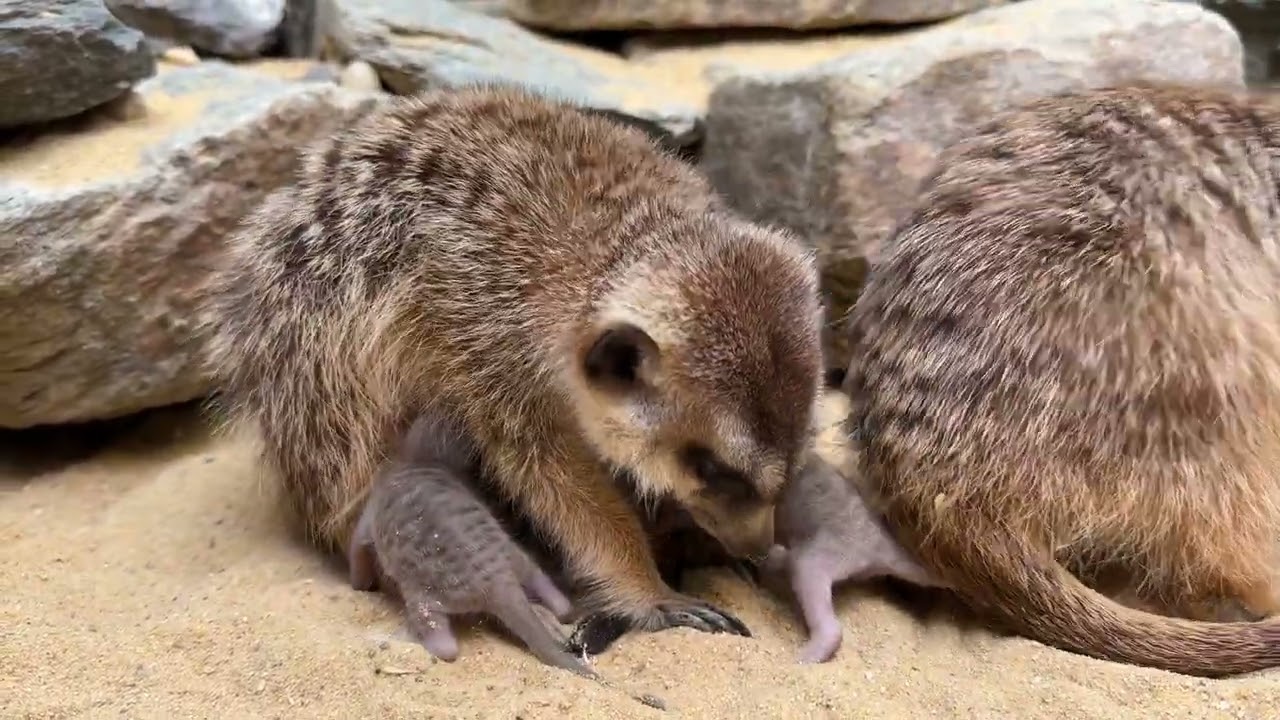Squeaky Fun: The Lives of Meerkats at the National Zoo
At the National Zoo, the meerkats are furry fun for visitors. Known for their cute faces, playful demeanor, and unique social structure within their group, these animals are a joy to watch. In this article, we’ll look at the meerkats at the National Zoo and the recent arrival of their newest additions.
Who are these Meerkats?
Meerkats are small mammals that belong to the mongoose family. They originate from southern Africa, and their habitat ranges from the Kalahari Desert to the southern regions of Angola and South Africa. They live in large groups, called mobs, and are known for their unique social structure. Meerkats live with a dominant alpha pair responsible for all breeding within the mob. The rest of the mob members are helpers who assist with raising the pups and protecting the group against predators.
Meet the Meerkats of the National Zoo
The National Zoo has a group of meerkats who are a joy to watch. They are led by the dominant alpha pair composed of Sadie and Frankie. Aunt Stella is also a group member and contributes to raising the young pups. The group currently has five pups, born on May 14th. These born pups are as small as your palm, but their cuteness has grown exponentially.
The Meerkat Parents’ Responsibilities
Being parents to a mob of meerkats is challenging, but Sadie and Frankie are up to it. They are responsible for all breeding activities within the group and have a close relationship with the other members. The Female meerkats have a gestation period of around 11 weeks and usually give birth to litters of two to five pups. The alpha pair and other helpers within the group raise the pups. The female meerkats nurse the pups, while the alpha male protects the group.
The Helpers’ Role in Raising the Pups
The other mob members are essential in raising and protecting the young pups. In the case of the National Zoo meerkats, Stella, Sadie’s sister, helps with pup-rearing duties. Other helpers in the mob help with foraging for food, protecting the home den, and grooming the young pups. This social structure is one of the most unique aspects of meerkats and makes them interesting to observe.
Visiting the Small Mammal House
The meerkats at the National Zoo can be seen at the Small Mammal House. Visitors can watch them play, forage for food, and interact with each other. The Small Mammal House is open daily from 10 a.m. to 4 p.m. Visitors must have an advance reserved ticket to enter.
Conclusion
Meerkats are a fascinating species of animals with a unique social structure. Their squeaky little chirps and energetic antics are guaranteed to make you smile. The meerkats at the National Zoo are a great example, with Sadie, Frankie, and Stella being the alpha group and helpers staying around to protect and raise young pups. Visitors can enjoy observing these adorable animals, all while these meerkats provide valuable research opportunities for animal behaviorists and researchers at the National Zoo and Conservation Biology Institute.
*****
Summary of Description:
Meerkats have been born at the Smithsonian’s National Zoo and Conservation Biology Institute, and visitors can go to the Small Mammal House to see them with their parents and aunt. The link provides more information.
*****
*****
Source Description
Sound ON for the sweetest squeaks. Meerkat’s mom Sadie, dad, Frankie, and aunt Stella have their paws full with these pups. Stop by the Small Mammal House to see our growing mob.
. . .
LEARN MORE: https://nationalzoo.si.edu/news/meerkats-are-born-smithsonians-national-zoo-and-conservation-biology-institute.


